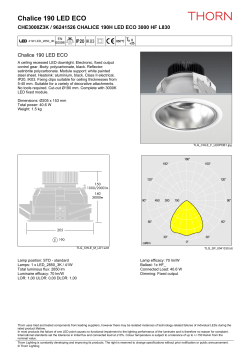
Guarded Dependent Type Theory with Coinductive Types
Guarded Dependent Type Theory with
Coinductive Types
Aleˇs Bizjak1 , Hans Bugge Grathwohl1 , Ranald Clouston1 ,
Rasmus E. Møgelberg2 and Lars Birkedal1
1
Department of Computer Science, Aarhus University, Denmark
2
IT University of Copenhagen, Denmark
{abizjak|hbugge|ranald.clouston|birkedal}@cs.au.dk, mogel@itu.dk
Modern implementations of intensional dependent type theories, such as Coq, Agda, and
Idris, have been used successfully for programming and proving in many projects. However
they offer limited support for coinductive types.
For programming, the challenge is to ensure that functions on coinductive types are welldefined; that is, productive with unique solutions. Syntactic guardedness checks, as used for
example in Coq, ensure productivity by requiring that recursive calls be nested directly under
a constructor, but such checks exclude many valid definitions, particularly in the presence of
higher-order functions.
For proving, the challenge is to reconcile the extensional nature of coinductive types, which
are characterised by observations, with intensional equality. For example, the natural notion of
bisimulation on streams does not coincide with inhabitation of the identity type. Thus one is
forced to introduce a non-standard notion of equality for coinductive types, which will typically
not be a congruence [4]. It would be preferable if one could instead directly use the identity
relation of the type theory.
For the programming challenge, a type-based approach to guarded recursion, more flexible
than syntactic checks, was suggested by Nakano [6]. A new modality ., called ‘later’, allows us
to distinguish between data we have access to now, and data which we have only later. . must
guard self-reference in type definitions, so for example guarded streams of natural numbers are
described by the guarded recursive equation StrgN ' N × . StrgN asserting that stream heads are
available now, but tails only later.
Using . alone, however, enforces a discipline more rigid than productivity. For example,
all stream functions must be causal [3], so elements of the result must not depend on deeper
elements of the argument, ruling out the ‘every other’ function that returns every second element
of a given stream. This limitation motivated the introduction of clock quantifiers by Atkey and
McBride [1], which permit . to be eliminated in a controlled way. In earlier work [2] we recast
these quantifiers as the unary type-former , called ‘constant’. Moreover such type-formers give
rise to types whose denotation is exactly that of standard coinductive types [5, Theorem 2].
Hence allows us to program and prove with ‘real’ coinductive types, with guarded recursion
providing the ‘rule format’ for their manipulation. For example, the coinductive type of streams
of natural numbers can be defined simply as StrN , StrgN .
In previous work [2], we introduced the guarded λ-calculus, gλ, a simply typed lambda
calculus with guarded and coinductive types, and a logic, Lgλ, as a separate layer, to prove
properties of elements. The logic allowed us to prove properties of coinductive types, but not in
the integrated fashion supported by dependent type theories. In this talk we introduce guarded
dependent type theory, gDTT, which supports programming and proving with guarded and
coinductive dependent types.
For the proving challenge, our approach is to use guarded recursion to prove intensional
equality of terms of guarded recursive types. From this we can derive equalities of terms of
31
Guarded dependent type theory with coinductive types
Bizjak et al.
coinductive types, thus circumventing the need for a non-standard equality type for coinductive
types.
One of the key challenges in designing gDTT is coping with elements that are only available
later, i.e., elements of types of form .A. With gλ we had the term formation rules
Γ`t:A
Γ ` next t : .A
Γ ` f : .(A → B)
Γ ` t : .A
Γ ` f ~ t : .B
The first rule allows us to make later use of data that we have now. The second intuitively
says that if f will later be a function mapping A to B, and we will later have an element t
of A, then, later, we can apply f to t to get an element of B. Let us consider the ~ rule
for dependent types, where function spaces are generalised to Π-types. Supposing that f has
type .(Πx : A.B), what type should f ~ t have? If B depends on x, it does not make sense
to follow the simply-typed approach and use .B. But since t has type .A, and not A, we
cannot substitute t for x. Intuitively, t will eventually reduce to some value next u, and so the
resulting type should be .B[u/x]. But if t is an open term we may not be able to perform this
reduction, so cannot type our term. To address this issue we introduce a new notion, of delayed
substitution, allowing us to express the resulting type as .[x t].B. Definitional equality rules
allow us to simplify this type when t is a value, i.e., .[x next u].B ' .B[u/x] as expected.
The novel features of gDTT allow us to address both the programming and proving challenges
posed by coinductive types. To illustrate, consider addition of two guarded streams:
plusg ,
fix φ.λ(xs : StrgN )(ys : StrgN ).
: StrgN → StrgN → StrgN
consg ((hdg xs) + (hdg ys)) (φ ~ tlg xs ~ tlg ys)
Here hdg takes the head of a stream, and tlg its tail (recalling that tails of guarded streams
have type . StrgN ). This function as whole is defined by guarded recursion, so φ has type
.(StrgN → StrgN → StrgN ). The ~-application φ ~ tlg xs ~ tlg ys has type . StrgN , so the consg (· · · )
sub-expression has type StrgN .
With gDTT we can prove the commutativity of addition on streams. Assuming that c is
a proof term witnessing commutativity of + on natural numbers, and that pη is a proof term
yielding equality of two pairs when given equality proofs of their respective components, we can
construct a proof:
p,
fix φ.λ (xs, ys : StrgN ) .
: Π(xs, ys : StrgN ).IdStrgN(plusg xs ys, plusg ys xs).
pη (c (hdg xs) (hdg ys)) (φ ~ tlg xs ~ tlg ys)
where Id is the identity type-former. Note that p is again defined by guarded recursion, and that
it is quite simple: it says that to show commutativity of plusg we proceed by using commutativity
of + on the heads, then continuing recursively on the tails. While p itself is simple, showing
that p indeed has the right type makes use of the new features in gDTT. For example, the
subterm φ ~ tlg xs ~ tlg ys cannot be typed without use of the generalised . carrying a delayed
substitution.
We can lift the function plusg to a function on coinductive streams plus : StrN → StrN → StrN .
Likewise, using the new features of gDTT, we can turn the proof p of commutativity of plusg
into one for plus, i.e., construct a term of type Π(xs, ys : StrN ).IdStrN(plus xs ys, plus ys xs).
Thus we can use guarded recursion to program and prove properties on guarded streams,
and then convert these into programs and proofs for coinductive streams.
This abstract is based on a recently submitted paper.
32
Guarded dependent type theory with coinductive types
Bizjak et al.
References
[1] R. Atkey and C. McBride. Productive coprogramming with guarded recursion. In Proc. of ICFP ’13,
pp. 197–208. ACM, 2013.
[2] R. Clouston, A. Bizjak, H. B. Grathwohl, and L. Birkedal. Programming and reasoning with
guarded recursion for coinductive types. In Proc. of FoSSaCS 2015, v. 9034 of Lect. Notes in
Comput. Sci., pp. 279–294.Springer, 2015.
[3] N. R. Krishnaswami and N. Benton. Ultrametric semantics of reactive programs. In Proc. of LICS
’11, pp. 257–266. IEEE CS, 2011.
[4] C. McBride. Let’s see how things unfold: Reconciling the infinite with the intensional. In Proc. of
CALCO ’09, v. 5728 of Lect. Notes in Comput. Sci., pp. 113–126. Springer, 2009.
[5] R. E. Møgelberg. A type theory for productive coprogramming via guarded recursion. In Proc. of
CSL-LICS ’14, art. 71. ACM, 2014.
[6] H. Nakano. A modality for recursion. In Proc. of LICS ’00, pp. 255–266. IEEE CS, 2000.
33
© Copyright 2025










